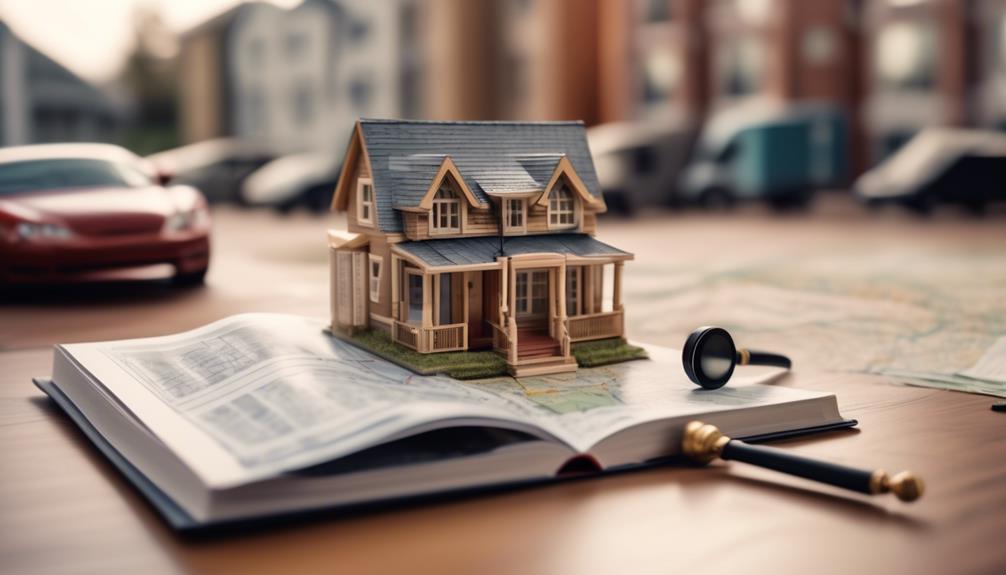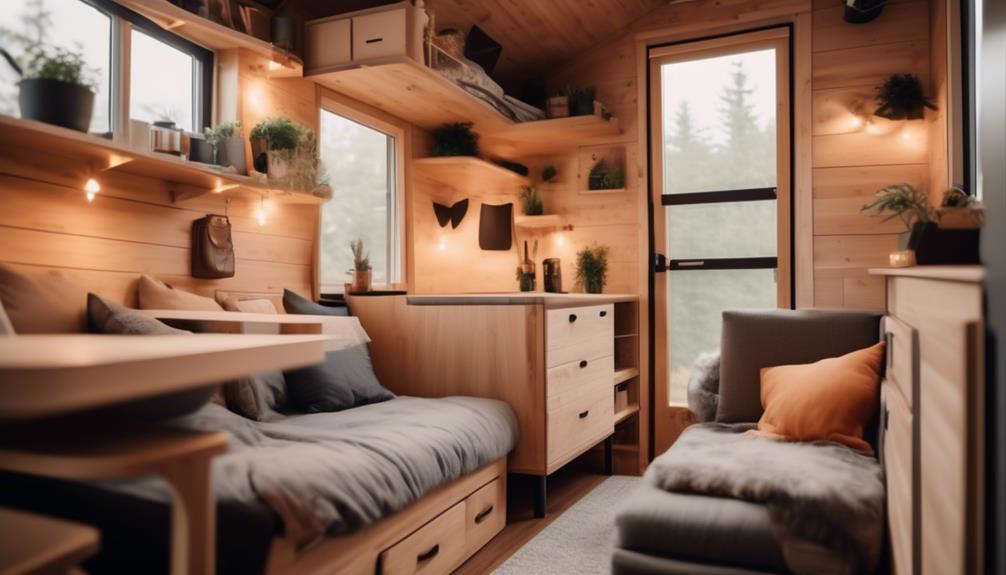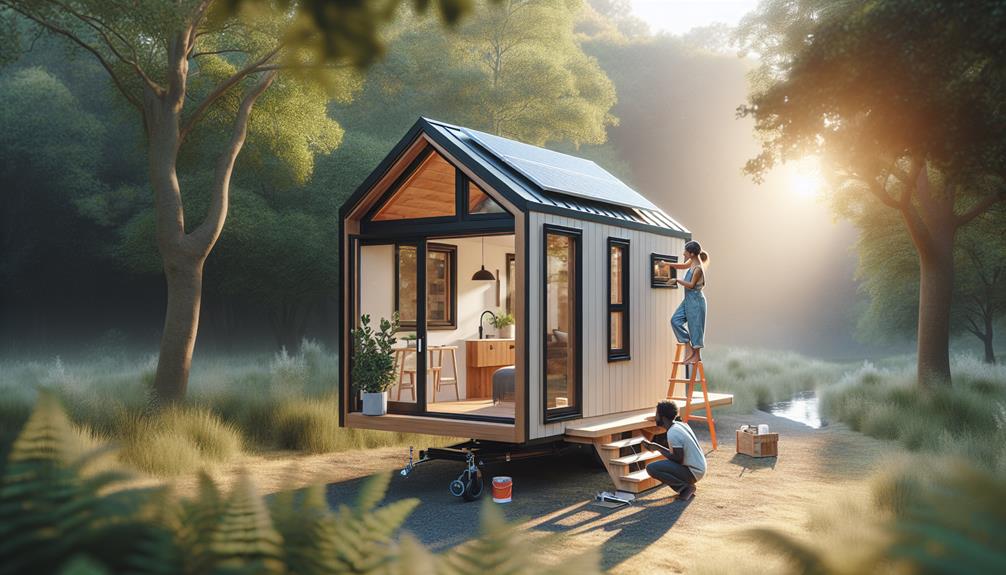Imagine you've just stumbled upon a picturesque mobile tiny home, complete with reclaimed wood accents and a rooftop deck perfect for stargazing. As you envision yourself embarking on a similar project, it's essential to grasp the complexities and nuanced decisions that lie ahead.
You'll need to navigate a labyrinth of building codes and zoning laws, all while ensuring your compact abode is both functional and aesthetically pleasing. In crafting your home on wheels, you'll confront challenges ranging from selecting a durable trailer foundation to maximizing every square inch of your limited space.
Stick around, and you'll uncover practical advice and industry secrets that could save you time and money, as well as potential headaches, transforming the daunting task of building your mobile tiny home into an achievable dream.
Key Takeaways
- Budgeting and cost considerations are crucial when building a mobile tiny home. Calculating expenses, researching prices, and creating a detailed budget with contingencies will help manage costs effectively.
- Design and planning should focus on maximizing space efficiency and choosing a design that fits the tiny home lifestyle. Selecting lightweight, high-quality materials and planning for essential systems like electrical, water, and waste are also important.
- Understanding and complying with legal requirements and permits is essential to avoid legal hurdles. Researching local building codes, obtaining necessary permits, and considering RVIA certification or accessory dwelling regulations are important steps.
- Construction and materials should prioritize durability and mobility. Selecting lightweight materials, properly insulating the home, and choosing a weather-resistant roofing material are key considerations. Additionally, solid construction techniques tailored to the challenges of tiny living should be emphasized.
Budgeting for Your Build
Crafting a meticulous budget is your first step toward transforming the dream of a mobile Tiny House on Wheels into an affordable reality. Dive into the planning process by calculating the cost of materials, labor, permits, and the inevitable unexpected expenses.
As you're building a tiny home, research and compare prices for a tiny house trailer, essential materials, and appliances to pinpoint cost-effective solutions.
Create a budget that's detailed yet flexible, with contingencies for overages to prevent overspending. Consider the DIY route for certain parts of your build to cut labor costs.
Tiny homeowners must stay vigilant, tracking all outlays and tweaking the budget throughout the build to remain within financial limits. Remember to ensure your Tiny Houses on Wheels are structurally sound and adhere to building codes.
Designing Your Tiny Home
Before diving into construction, you'll need to design your tiny home with a focus on maximizing space, ensuring functionality, and reflecting your personal style within the compact layout. Your blueprint should not only adhere to zoning ordinances but also embrace the Tiny House Living philosophy—living simply in a small space.
Here's a quick guide to get you started:
| Aspect | Consideration |
|---|---|
| Minimum Square Footage | Optimize layout for efficiency |
| Types of Tiny Homes | Choose a design that fits the Tiny Home Lifestyle |
| Building Materials | Select lightweight, high-quality materials |
| Utilities | Plan for electrical, water, and waste systems |
| Placement & Legality | Understand RVIA certification and local ordinances |
Navigating Legal Requirements

When building your mobile tiny home, it's essential to familiarize yourself with local building codes and obtain the necessary permits to ensure your project complies with all legal requirements.
Here are key steps to navigate the legal landscape:
- Research local regulations: Building officials can provide guidance specific to Tiny Houses on Wheels (THOWs).
- Obtain necessary permits: Ensure your house on wheels mightn't face legal hurdles later.
- Consider RVIA certification: This can help classify your tiny home as a recreational vehicle, easing parking and living arrangements.
- Explore accessory dwelling regulations: Some areas allow tiny homes as accessory dwellings on existing properties.
- Consult legal experts: A real estate attorney can clarify the nuances of where you can legally live in your tiny home.
Taking these steps will help you innovate responsibly within the legal framework.
Construction and Materials
Having navigated the legal requirements, you'll now focus on selecting the right construction and materials to ensure your mobile tiny home is both durable and comfortable. Opt for high-quality, lightweight materials that home builders often recommend for stability without sacrificing mobility.
You need to insulate properly, not just to create a cozy living space, but also to make your tiny house energy-efficient.
For roofing, go for durability and weather resistance—your new tiny home will thank you in the long run. Investigate the pros and cons of various types of tiny house foundations, but a trailer is typically your best bet for a mobile abode.
Build a tiny home that stands the test of time by emphasizing solid construction techniques and materials tailored to the unique challenges of tiny living.
Interior Space Maximization

To maximize your tiny home's interior, consider multifunctional furniture that doubles as storage to cleverly conserve space. As you live in a tiny space, every square foot counts. Make sure you're utilizing each inch creatively for tiny home living.
Here are some innovative strategies:
- Vertical storage solutions to utilize different shapes and heights.
- Foldable furniture to transform the living space as needed.
- Mirrors to give the illusion of a larger area.
- Open shelving to avoid visual clutter.
- Transparent dividers to maintain an open feel.
With these tips, your tiny living experience can be both stylish and functional. Remember, in tiny homes, it's not just about fitting in everything you need—it's about doing so in a way that maximizes your use of the space.
Frequently Asked Questions
What I Need to Know About Building a Tiny Home?
You'll need to consider design considerations, zoning regulations, and material selection. Optimize space, aim for sustainable living, estimate costs, and tackle DIY challenges. Ensure legal compliance, manage utility connections, and adapt to the climate.
How to Build a Mobile Tiny House?
You'll carve out your haven on wheels, balancing weight considerations and structural integrity with savvy design choices. Prioritize space optimization, insulation options, and material selection, adhering to legal restrictions for a sustainable, customized mobile abode.
Is Building Tiny Homes a Good Investment?
You're eyeing tiny homes for their downsizing benefits, financial freedom, and sustainable living perks. Considering market trends, rental demand, and zoning laws is key to maximizing your investment returns and resale value.
Is It Hard to Get Approved for a Tiny Home?
Navigating the maze of zoning challenges and legal restrictions, you'll find securing approval for your tiny home isn't straightforward. Tackling financing options, permit processes, and utility connections requires diligence, while insurance and land issues loom large.
Conclusion
You've charted the course, weaving through regulations like a skilled sailor in open seas.
Your tiny home, a tapestry of innovation and practicality, stands ready. In its compact chambers beats the heart of your future, a symphony of sustainability and style. Every inch sings of maximized space, each corner a testament to detail.
Now, embark on the journey of tiny living, where less is more and every day is a step closer to the essence of home.

